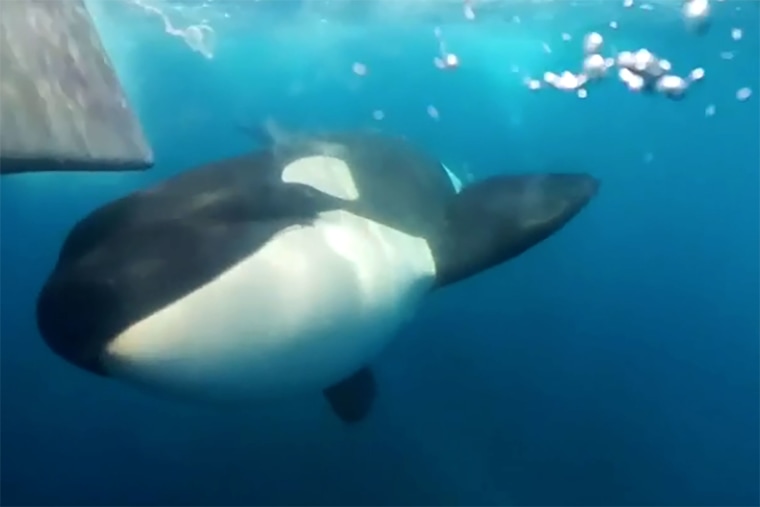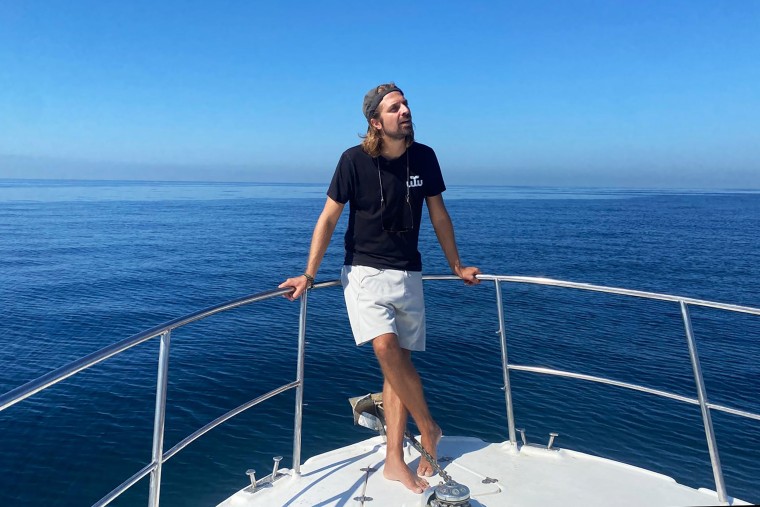ABOARD A BOAT IN THE STRAIT OF GIBRALTAR — From the surface, the azure waters seem calm and inviting in this narrow patch where the Atlantic Ocean meets the Mediterranean Sea.
Spain’s arid coast looms in one direction; the tip of Africa in another, less than 10 miles away. From time to time, schools of small fish breach the water in unison, as if in symphony.
But with binoculars trained on the horizon, the boat’s captain is on the lookout for something potentially far more unsettling: orcas, also known as killer whales, who in recent years have taken to slamming boats with alarming regularity.
Over the last five years, roughly 700 orca run-ins have been recorded, according to the Atlantic Orca Working Group-GTOA, a partnership of Spanish and Portuguese scientists that monitors the Iberian killer whale population. At least a half-dozen yachts, fishing vessels and sailboats have sunk.
For the Spanish fisherman who take to the Strait of Gibraltar nightly hunting for tuna, marlin and swordfish, the likelihood of an orca run-in has added another harrowing element to an already dangerous job.
“Of course they can sink you,” fisherman Manuel Merianda told NBC News earlier this month as he plucked out errant stingrays trapped in his fishing net after harvesting the night’s catch. “They break your rudder and water and waves begin to enter your boat, and once the water enters there is nothing you can do.”
On one of his recent fishing trips, Merianda’s boat was followed by a pod of orcas, an experience he described as terrifying. Yet when asked if that risk made orcas his enemy, Merianda shook his head.
“We are the ones who are in their habitat,” he said in Spanish. “We are the ones who don’t have to be there.”
The encounters have nonetheless become so frequent that Spanish authorities have issued an alert, urging sailors to stay close to the coastline, where the orcas don’t tend to stray, especially during the summer months.
Often the creatures will ram into the rudders, potentially rendering the vessels inoperable, or even bite off pieces of the boats.
Why Iberian orcas are attacking ships in the Strait of Gibraltar, one of the world’s busiest waterways, has quickly become one of the terrifying mysteries of the sea. The highly intelligent animals are known to be generally peaceful, especially toward humans, and before 2020, such interactions were basically unheard-of.
Not everyone believes these events, while harrowing and dangerous, constitute “attacks” in the literal sense of the word.
“Attacking implies something aggressive towards humans,” said Janek Andre, whose organization WeWhale tries to protect orcas. “These orcas are simply playing. So in the end, we call it — and everybody should call it — an interaction.”
Nearly every day during summer months, Andre and his teammates board a small boat on the Spanish coast and sail into the strait to track the movement of the orcas. When they spot them, they radio their location to sailors in the area, encouraging them to stay away.

Marine biologists have a host of competing theories for what the orcas are doing, from the “play” theory championed by Andre to the notion the orcas are retaliating, either for damage that boats have done to orcas in the past or for human-caused pollution of the waters they rely on.
One theory holds that it may just be a fad — that the orcas, like popularity-chasing teenagers, have simply picked up a curious learned behavior that for whatever reason has become the trend of the moment.
But new research offers a competing theory that’s gained traction among those who study the orcas’ habitat.
Scientists from the Bottlenose Dolphin Research Institute, based on Spain’s northwest coast, have pointed out that in recent years, the once-dwindling population of Atlantic bluefin tuna has recovered, in the process becoming the linchpin of the orcas’ diet. Atlantic bluefin tuna are tough prey: They swim faster than orcas and grow up to 13 feet long.
In a paper published this month in the scientific journal Ocean and Coastal Management, the scientists argue that what humans see as attacks are actually older orcas training the younger ones on hunting methods needed to successfully overcome their prey.
“They need to ram, they need to hit, they need to bite, to isolate this large tuna. And then this has to be in cooperation,” Bruno Diaz Lopez, the institute’s founder and chief biologist, said in an interview. “So how do they reinforce this technique? Practicing.”

Orcas, or “killer whales,” can grow up to 27 feet long and weigh as much as six tons. Known as the ocean’s top predator, they’re extremely intelligent, with their own languages of clicks and whistles that differ from region to region.
The subspecies striking boats is called the Iberian orca, and its future is anything but certain. The creatures are on the International Union for Conservation of Nature’s “Red List” of critically endangered species. Only about 35 of them are still believed to be alive, and their reproductive rates have become alarmingly low.
Faced with the need to share the waters with gigantic mammals, sailors in the strait have tried various ways to deter orcas when they show up. Some make noise to try to scare them away, throw sand in the water, or push their motors to full speed and try to leave the area. Others advocate turning off the engine, keeping silent and playing dead.
As he plotted a course through rippling waters back toward the coast of Spain, Andre, the WeWhale founder, said he believed humans would never know with certainty why so many orca interactions are taking place.
“We are not orcas. So you can do a lot of science and studies,” Andre said. “But in the end, it’s such an unknown world for us, what’s happening below the water and how these animals actually interact.”


